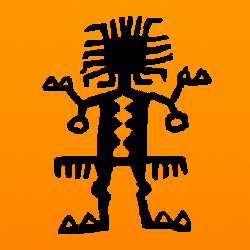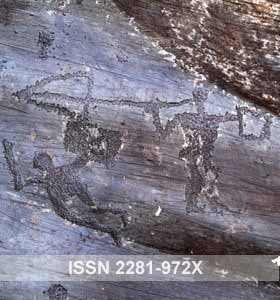 Este artículo trata sobre el sitio de arte rupestre de La Puntilla en el norte de Perú. Aunque pasé este sitio muchas veces no lo he visitado. Sin embargo, el sitio tiene varios paneles muy interesantes con petroglifos – todos reportados por primera vez por el arqueólogo aficionado local, Francisco Gregorio Díaz Núñez – que serán discutidos en este artículo.
Este artículo trata sobre el sitio de arte rupestre de La Puntilla en el norte de Perú. Aunque pasé este sitio muchas veces no lo he visitado. Sin embargo, el sitio tiene varios paneles muy interesantes con petroglifos – todos reportados por primera vez por el arqueólogo aficionado local, Francisco Gregorio Díaz Núñez – que serán discutidos en este artículo.
Tag Archive for arte rupestre
Una Actualización del Arte Rupestre del Cerro la Puntilla, Perú
Una Actualización del Arte Rupestre de Chumbenique – Perú
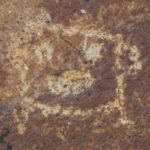 En 2016 visitamos por primera vez el sitio de arte rupestre de Chumbenique en el Valle de Zaña en el norte de Perú. Con base en nuestras investigaciones publiqué un artículo preliminar sobre los petroglifos de Chumbenique (Van Hoek 2016a). En mi artículo de 2016 mencioné que registramos 32 bloques con petroglifos . Sin embargo, volvimos a Chumbenique en septiembre de 2017 para una investigación más exhaustiva y pudimos agregar 21 rocas con petroglifos más. De ahí esta actualización.
En 2016 visitamos por primera vez el sitio de arte rupestre de Chumbenique en el Valle de Zaña en el norte de Perú. Con base en nuestras investigaciones publiqué un artículo preliminar sobre los petroglifos de Chumbenique (Van Hoek 2016a). En mi artículo de 2016 mencioné que registramos 32 bloques con petroglifos . Sin embargo, volvimos a Chumbenique en septiembre de 2017 para una investigación más exhaustiva y pudimos agregar 21 rocas con petroglifos más. De ahí esta actualización.
Una Actualización del Arte Rupestre de Mayasgo-1 (Perú)
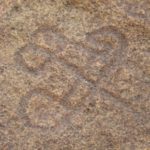 En noviembre 2016 Daniel Castillo Benítez y María Susana Barrau informaron sobre el sitio de arte rupestre de Mayasgo-1 en el Valle de Carabamba en el norte de Perú. En septiembre de 2017 investigué el mismo sitio y descubrí más petroglifos. Por lo tanto, este artículo ofrece una actualización del artículo de Castillo y Barrau.
En noviembre 2016 Daniel Castillo Benítez y María Susana Barrau informaron sobre el sitio de arte rupestre de Mayasgo-1 en el Valle de Carabamba en el norte de Perú. En septiembre de 2017 investigué el mismo sitio y descubrí más petroglifos. Por lo tanto, este artículo ofrece una actualización del artículo de Castillo y Barrau.
In November 2016 Daniel Castillo Benítez and María Susana Barrau reported the rock art site of Mayasgo-1 in the Carabamba Valley of northern Peru. In September 2017 I surveyed the same site and discovered more petroglyphs. Therefore this paper offers an update of the report by Castillo and Barrau.
‘Petroglifos’ Aviformes Tridimensionales (Perú)
 This study discusses some rare instances of biomorphic rock formations that also bear petroglyphs, which, in some cases enhance the biomorphic character of the rock. The focus in this study is on the Sacred Sitting Bird at Cerro La Puntilla in northern Peru.
This study discusses some rare instances of biomorphic rock formations that also bear petroglyphs, which, in some cases enhance the biomorphic character of the rock. The focus in this study is on the Sacred Sitting Bird at Cerro La Puntilla in northern Peru.
Este estudio discute algunos casos raros de formaciones rocosas biomórficas que también tienen petroglifos, que, en algunos casos, mejoran el carácter biomórfico de la roca. El enfoque en este estudio está en el Ave Sagrado Sentado en Cerro La Puntilla en el norte de Perú.
Un Sitio Rupestre Poco Conocido en Chicama, Perú
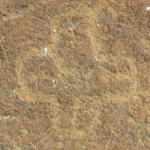 En el Valle de Chicama en el norte de Perú hay muchos sitios de arte rupestre. Más de 20 sitios han sido reportados en esta cuenca (Castillo Benites 2006). Sin embargo, hay sólo unos pocos sitios que tienen un gran número de paneles con petroglifos. La mayoría de los otros sitios de la cuenca de Chicama tienen sólo uno o algunos paneles de petroglifos y la mayoría de ellos son poco conocidos. Este artículo se trata de un sitio poco conocido en Chicama.
En el Valle de Chicama en el norte de Perú hay muchos sitios de arte rupestre. Más de 20 sitios han sido reportados en esta cuenca (Castillo Benites 2006). Sin embargo, hay sólo unos pocos sitios que tienen un gran número de paneles con petroglifos. La mayoría de los otros sitios de la cuenca de Chicama tienen sólo uno o algunos paneles de petroglifos y la mayoría de ellos son poco conocidos. Este artículo se trata de un sitio poco conocido en Chicama.
By Maarten van Hoek
Aiapaec in Andean Rock Art ?
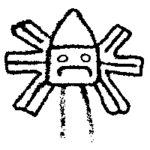 Aiapaec probably was the supreme divinity of the Mochica pantheon, an ancient civilisation that emerged in the coastal strip of northern Peru. There are numerous often much differing depictions of full zoo-anthropomorphic figures and – especially – of isolated heads in the Huaca de la Luna near Trujillo that are said to represent Aiapaec. In view of the importance of Aiapaec in this part of Peru it is extraordinary that there are no unambiguous depictions of undeniable Moche origin of this personage in Andean rock art. This paper discusses that problem and describes seven petroglyphs that might symbolise Aiapaec.
Aiapaec probably was the supreme divinity of the Mochica pantheon, an ancient civilisation that emerged in the coastal strip of northern Peru. There are numerous often much differing depictions of full zoo-anthropomorphic figures and – especially – of isolated heads in the Huaca de la Luna near Trujillo that are said to represent Aiapaec. In view of the importance of Aiapaec in this part of Peru it is extraordinary that there are no unambiguous depictions of undeniable Moche origin of this personage in Andean rock art. This paper discusses that problem and describes seven petroglyphs that might symbolise Aiapaec.
By Maarten van Hoek
PERSONAJES DE RANGO Y EMBLEMAS DE PODER – PERÚ
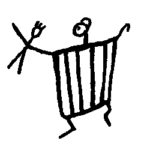 El autor – Rainer Hostnig, con residencia en Cusco, Perú – realiza una síntesis comparativa de representaciones del sitio rupestre recientemente registrado de Ñawpakachi (y los demás yacimientos rupestres en el Valle Sagrado, Perú) con figuras grandes de personajes de la élite inca o sus abstracciones en forma de escudos o unkus.
El autor – Rainer Hostnig, con residencia en Cusco, Perú – realiza una síntesis comparativa de representaciones del sitio rupestre recientemente registrado de Ñawpakachi (y los demás yacimientos rupestres en el Valle Sagrado, Perú) con figuras grandes de personajes de la élite inca o sus abstracciones en forma de escudos o unkus.
The author – Rainer Hostnig, who resides in Cusco, Peru – performs a comparative synthesis of representations of the recently recorded rock art site of Ñawpakachi (and other sites in the Sacred Valley, Peru) featuring large figures of Inca dignitaries or their abstractions in the form of shields or ‘unkus’.
Actualización del arte rupestre en la cuenca del río Virú
 The paper by Daniel Castillo Benites from Peru and María Susana Barrau from Argentina (2016) offers an excellent overview regarding the rock art of the Virú drainage in northern Peru. Yet there are some flaws.
The paper by Daniel Castillo Benites from Peru and María Susana Barrau from Argentina (2016) offers an excellent overview regarding the rock art of the Virú drainage in northern Peru. Yet there are some flaws.
El trabajo de Daniel Castillo Benites (de Perú) y María Susana Barrau (de Argentina) (2016) ofrece una excelente visión general del arte rupestre en la cuenca del río Virú en el norte del Perú. Sin embargo, hay algunas fallas.
By Maarten van Hoek
Up-Dating the Rock Art of Quebrada del Felino, Peru
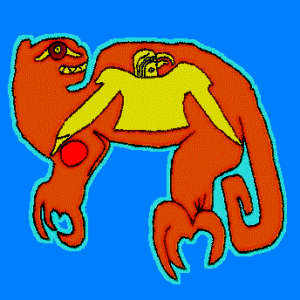 Este trabajo investiga el arte rupestre en el Valle de Jequetepeque en el norte de Perú. Se centra en el sitio de Quebrada del Felino. El artículo actualiza la información que se publicó anteriormente y se centra en establecer la fecha de varias imágenes en el Quebrada del Felino.
Este trabajo investiga el arte rupestre en el Valle de Jequetepeque en el norte de Perú. Se centra en el sitio de Quebrada del Felino. El artículo actualiza la información que se publicó anteriormente y se centra en establecer la fecha de varias imágenes en el Quebrada del Felino.
This paper focuses on the rock art site of Quebrada del Felino in the Valley of the Jequetepeque in northern Peru. The paper updates the information that was published earlier and focuses on the dating issue of some images at Quebrada del Felino.
Petroglifos en Yarabamba, Perú: ¿Aplacandos los Apus?
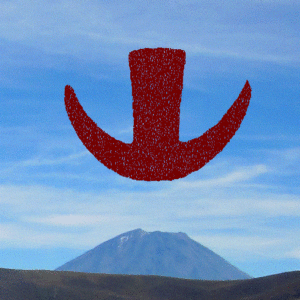 El tema principal de este artículo es la relación entre ciertos petroglifos en el Valle de Yarabamba, sur de Perú, y el volcán El Misti. Para explicar esta relación se discutirán dos tipos de petroglifos en el sitio de Alto de San Antonio en el Valle de Yarabamba.
El tema principal de este artículo es la relación entre ciertos petroglifos en el Valle de Yarabamba, sur de Perú, y el volcán El Misti. Para explicar esta relación se discutirán dos tipos de petroglifos en el sitio de Alto de San Antonio en el Valle de Yarabamba.
The main subject of this article is the relationship between certain petroglyphs in the Yarabamba Valley, southern Peru, and the volcano Misti. In order to explain this relationship I will discuss two types of images that are found at the rock art site of Alto de San Antonio in the Yarabamba Valley.
Petroglifos Únicos en Ariquilda, Chile
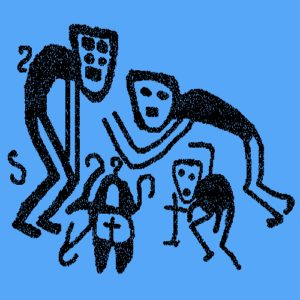 Este artículo investiga cuatro iconos raros del sitio de arte rupestre de Ariquilda en el desierto de Atacama en el norte de Chile. Se trata de un grupo de figuras antropomórficas que muestran una actitud muy específica y tres otros motivos muy enigmáticos. He nombrado estos cuatro motivos: ‘Los Hombres Torcidos’, ‘Los Cueros’ y ‘Las Gafas junto con Las Figuras Triangulares’. De nuevo estos iconos confirman el estatus especial de Ariquilda en el arte rupestre andino (véanse también ‘The Avian Staff Bearer’ y ‘Icons That Travel’, ambos publicados en TRACCE).
Este artículo investiga cuatro iconos raros del sitio de arte rupestre de Ariquilda en el desierto de Atacama en el norte de Chile. Se trata de un grupo de figuras antropomórficas que muestran una actitud muy específica y tres otros motivos muy enigmáticos. He nombrado estos cuatro motivos: ‘Los Hombres Torcidos’, ‘Los Cueros’ y ‘Las Gafas junto con Las Figuras Triangulares’. De nuevo estos iconos confirman el estatus especial de Ariquilda en el arte rupestre andino (véanse también ‘The Avian Staff Bearer’ y ‘Icons That Travel’, ambos publicados en TRACCE).
Los Petroglifos de Tintín, Sihuas, Arequipa, Perú
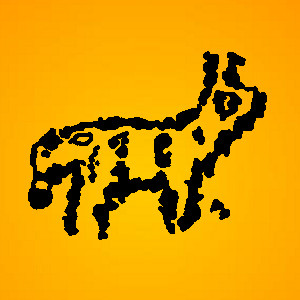 Tintín es un sitio pequeño de arte rupestre en el valle del Río Sihuas en el sur de Perú. El sitio, también conocido como Cerro Blanco y Pisanay tiene algunas rocas con petroglifos. La Roca Principal es bastante grande y tiene un gran cantidad de imágenes. Un video muestra los petroglifos en detalle.
Tintín es un sitio pequeño de arte rupestre en el valle del Río Sihuas en el sur de Perú. El sitio, también conocido como Cerro Blanco y Pisanay tiene algunas rocas con petroglifos. La Roca Principal es bastante grande y tiene un gran cantidad de imágenes. Un video muestra los petroglifos en detalle.
Tintín is a small rock site in the Sihuas River valley in southern Peru. The site, also known as Cerro Blanco and Pisanay has some rocks with petroglyphs. The Main Rock is quite large and has a lot of images. A video shows those petroglyphs in detail.
By Maarten van Hoek Read more
The Petroglyphs of Chumbenique, Zaña, Peru
 This short paper, together with a YouTube video, describes and illustrates the rock art discovered in the valley of the Río Zaña in northern Peru. The petroglyphs were first described (in Spanish) by archaeologist Edgar Bracamonte in 2014. Because that is the only brief report that exists at the moment, I have written a brief paper in English, while the video (which is in Spanish) offers the illustrations as well as shots of the environment. The locals at Chumbenique know about ‘their’ rock art and I hope that they will encourage locals of their village and of the valley and of course every visitor to Chumbenique to respect and protect this sacred site.
This short paper, together with a YouTube video, describes and illustrates the rock art discovered in the valley of the Río Zaña in northern Peru. The petroglyphs were first described (in Spanish) by archaeologist Edgar Bracamonte in 2014. Because that is the only brief report that exists at the moment, I have written a brief paper in English, while the video (which is in Spanish) offers the illustrations as well as shots of the environment. The locals at Chumbenique know about ‘their’ rock art and I hope that they will encourage locals of their village and of the valley and of course every visitor to Chumbenique to respect and protect this sacred site.
By Maarten van Hoek
Los Bordes Aserrados de las Rocas de Chuquillanqui, Perú
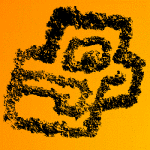 A menudo un sitio de arte rupestre tiene una característica muy específica que además es a menudo único en ese sitio. Este artículo presenta un elemento tan distintivo en el sitio rupestre de Chuquillanqui en la cuenca del Río Chicama en el norte de Perú.
A menudo un sitio de arte rupestre tiene una característica muy específica que además es a menudo único en ese sitio. Este artículo presenta un elemento tan distintivo en el sitio rupestre de Chuquillanqui en la cuenca del Río Chicama en el norte de Perú.
Often a rock art site has a very specific feature that moreover is often unique to that site. This paper presents such a distinguishing element at the petroglyph site of Chuquillanqui in the Chicama drainage of northern Peru.
by Maarten van Hoek
Kuntur Wasi, Peru: Architectural Art or Rock Art ?
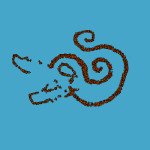 Often we find pecked or scratched images on walls of rocks that are part of ancient structures, ranging from simple circular huts to intricate temple complexes. In many cases the rocks that are used have been smoothened before (or after) they were incorporated. In most instances it is clear that those images have been added after the smoothening and after the incorporation of the stones into the structure. Some of them may definitely be regarded as true rock art and not as architectural art, but a few images are ambiguous in this respect. This short paper discusses one such controversial image on a menacing monolith at Kuntur Wasi in northern Peru.
Often we find pecked or scratched images on walls of rocks that are part of ancient structures, ranging from simple circular huts to intricate temple complexes. In many cases the rocks that are used have been smoothened before (or after) they were incorporated. In most instances it is clear that those images have been added after the smoothening and after the incorporation of the stones into the structure. Some of them may definitely be regarded as true rock art and not as architectural art, but a few images are ambiguous in this respect. This short paper discusses one such controversial image on a menacing monolith at Kuntur Wasi in northern Peru.
By Maarten van Hoek
The Frontal Insignia-Tumi
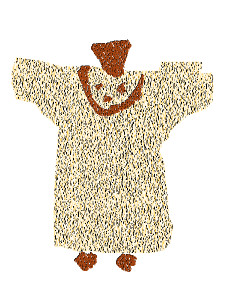 The Desert Andes (the westernmost coastal strip of South America) is very rich in rock art sites. In rare cases specific images occur at selected sites, often separated by long streches of the desert. Two telling examples are the Avian Staff Bearer and the The Enigmatic Traveller (both published in TRACCE). This study examines another “travelling” icon: The Frontal Insignia-Tumi that is found from Tamentica in the south to – surprisingly – Toro Muerto in the north of the Study Area, a distance of no less than 630 km (as the crow flies).
The Desert Andes (the westernmost coastal strip of South America) is very rich in rock art sites. In rare cases specific images occur at selected sites, often separated by long streches of the desert. Two telling examples are the Avian Staff Bearer and the The Enigmatic Traveller (both published in TRACCE). This study examines another “travelling” icon: The Frontal Insignia-Tumi that is found from Tamentica in the south to – surprisingly – Toro Muerto in the north of the Study Area, a distance of no less than 630 km (as the crow flies).
By Maarten van Hoek
Sobre Dibujos de Arte Rupestre (Andino)
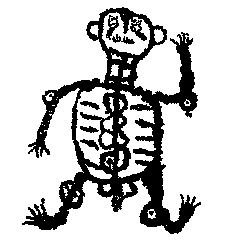 The essence of every rock art study must be the image. In most cases the image that we observe is not quite the same as manufactured and/or intended by prehistoric people. It is altered by weathering, erosion and all sorts of anthropic activities. Yet, the resulting image is the only source to use. The best thing to do is to photograph the image, but if one makes a drawing of the image, it should be as correct as possible. Yet, many rock art researchers produce and publish drawings that are not correct. Consequently, their interpretations will often be incorrect. This study discusses some examples of incorrect drawings and offers some recommendations.
The essence of every rock art study must be the image. In most cases the image that we observe is not quite the same as manufactured and/or intended by prehistoric people. It is altered by weathering, erosion and all sorts of anthropic activities. Yet, the resulting image is the only source to use. The best thing to do is to photograph the image, but if one makes a drawing of the image, it should be as correct as possible. Yet, many rock art researchers produce and publish drawings that are not correct. Consequently, their interpretations will often be incorrect. This study discusses some examples of incorrect drawings and offers some recommendations.
by Maarten van Hoek
The Avian Staff Bearer
This paper investigates a well-known but rare icon from the rock art of the Atacama Desert. It concerns a group of anthropomorphic figures displaying a very specific bird-related element. For that reason Juan Chacama and Gustavo Espinosa speak of ‘hombres-falcónidas’, ‘raptor-men’, to describe this class of anthropomorphic figures. Remarkably, their interpretation seems to be generally ignored by several archaeologists and rock art investigators. This study presents a revaluation of the theory put forward by Juan Chacama and Gustavo Espinosa in 1997.
By Maarten van Hoek
